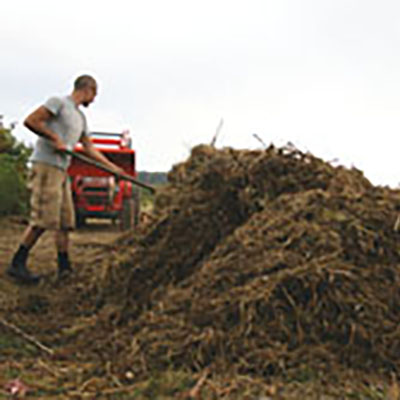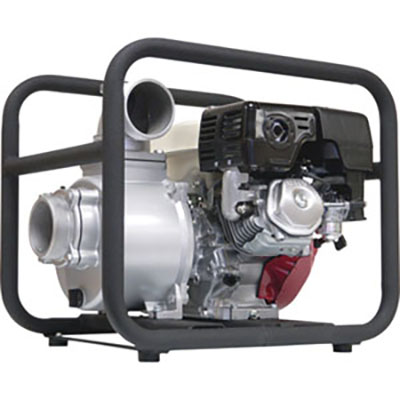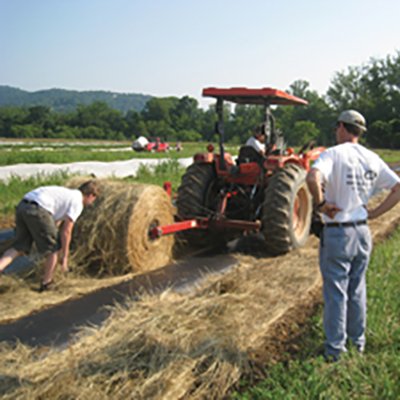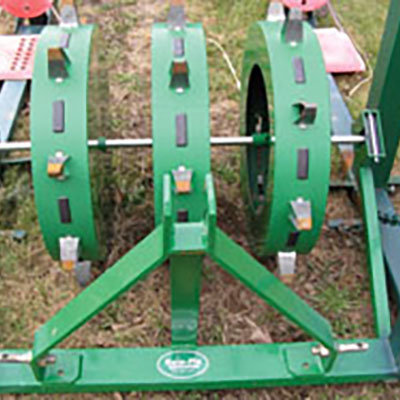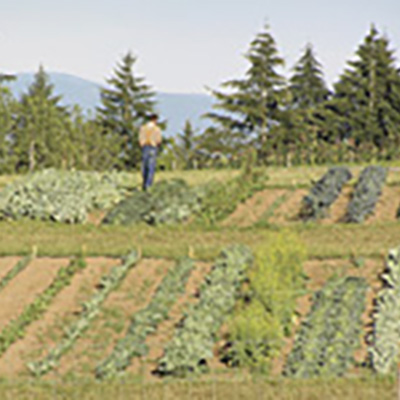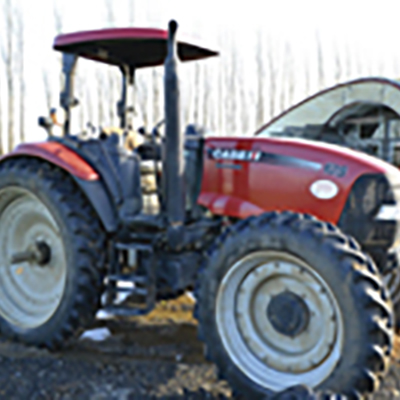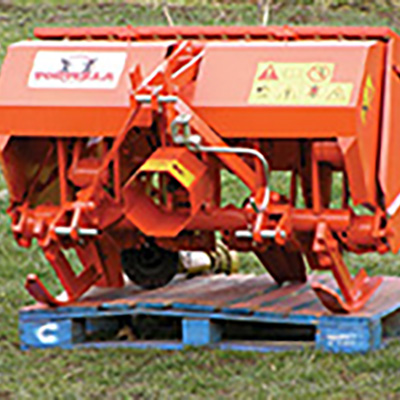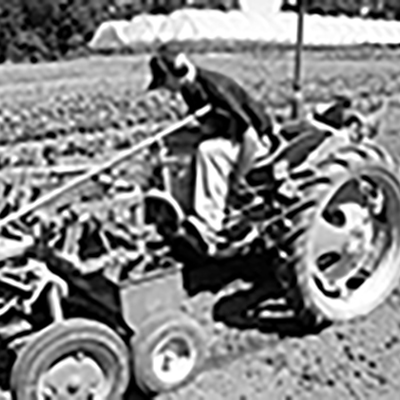Post your farm-made tool on Instagram or Facebook with #toolsforgrowingformarket. If author Josh Volk picks your tool, you win a $50 tool gift certificate and a Full Access subscription to GFM.
This article originally appeared in the October 2020 Growing for Market Magazine
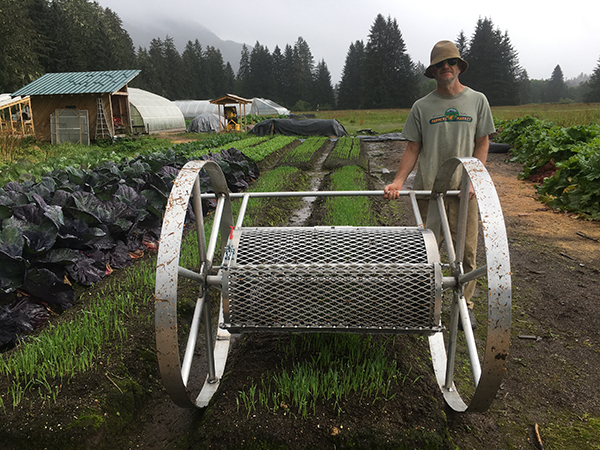
Compost spreader used to cover direct seeded beds.
This month I picked two tools from Farragut Farm in southeast Alaska that they posted short videos of on Instagram. The first was their compost sifter in action, the second of a compost spreader they use to cover direct-seeded beds.

Compost sifter with detail of bin that collects oversized pieces of debris.
Anyone who has spent any time sifting compost for potting mix using a box screen over a wheelbarrow has probably dreamed of a better way to do it. The improvement I always imagined was pretty much what Farragut Farm built. Unlike them, I gave up on using sifted compost before I got around to building a rotary screen (also known as a trommel screen). I may be re-inspired to build a sifter and go back to it.
There are a number of features that Bo of Farragut Farm designed into their sifter that make it work well and that aren’t obvious from the video but are worth keeping in mind if you decide to build your own. The basic concept here is that the sifting screen is shaped into a long barrel. The barrel is rotated by an electric motor while compost is fed into one end. The compost tumbles down the inclined barrel as it rotates and the siftings fall through the screen, filling a cart below, while the pieces too big to go through the screen come out the far end of the barrel and drop into a bin.
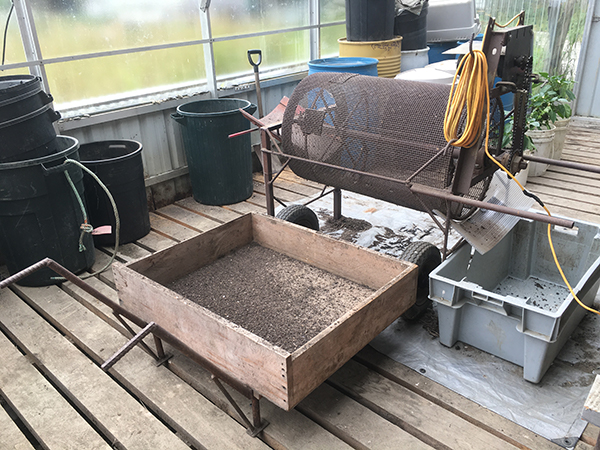
Detail of cart that collects the sifted compost.
In my correspondence with them they wrote: One thing Bo wanted to emphasize with the compost sifter is that the devil is in the details. It’s easy enough to make a functioning barrel sifter, but it is the small stuff that makes this sifter really effective and really pleasant to use. The ample loading shoot, the lip that holds the compost in at the entrance and keeps it from spilling out, the articulated drag bar that can work in either direction, the outflow shoot that directs sticks/rocks/debris into a collection bin, easy grip handles on front and rear to make it easy to transport (adding a set of wheels on one end would be great if you planned to move it around a lot). He also made the front legs adjustable so that you can raise and lower the angle to find the perfect degree for whatever it is you are sifting. As you might imagine, the compost has to be relatively dry, otherwise the screen just gets caked and it can’t function properly.
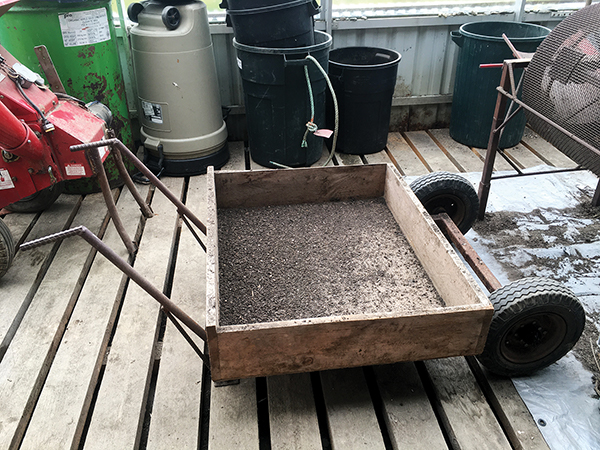
Custom low cart to catch the sifted compost.
You can see from the photos and their video that the whole thing is made from lots of repurposed pieces. For the hoops they found some rebar that had already been rolled into rounds (not uncommon for making the supports for large concrete columns). Straight rebar makes up the spokes that hold the barrel to a central axle that runs out both ends of the barrel and sits on pillow block bearings.
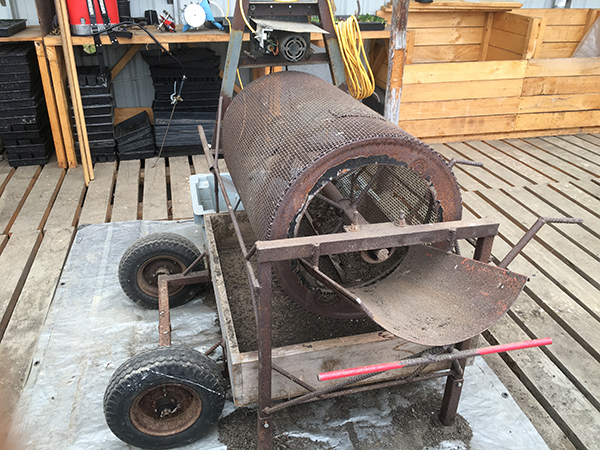
Loading chute.
The screen is ¼-inch rock screen which is much heavier duty than hardware cloth. For the end that the compost is fed into, the hoop and spokes are inset by a few inches to allow a feed chute to project into the barrel. That end of the barrel also has a lip made from a metal drum lid that is a couple inches high to keep the compost from falling back out as it’s loaded into the drum. I particularly appreciate the use of appropriate angle bracing on the frame, a feature I often find lacking on farm built tools.

AC gear motor that turns the barrel using a chain drive
Above the barrel, the frame holds up an AC gear motor and that turns the barrel using a chain drive. The gear motor runs at about 20 rpm and the chain drive further reduces the speed of the drum rotation down to about 7 rpm. The motor direction is reversible, and one of my favorite features of the sifter is a scraper bar that rides along the inside of the screen helping to keep the screen from clogging. Because the motor is reversible, the scraper hangs on an articulated arm so that it doesn’t bind up. The weight of the bar is what keeps it from coming off of the screen.
The whole sifter sits low enough that it’s not difficult to load compost into it, but that required a custom low cart to catch the sifted compost. They’ve built a cart that matches the size of the barrel and that is low enough to roll under. In all, they run about 6 yards of farm-made compost through the sifter each year.
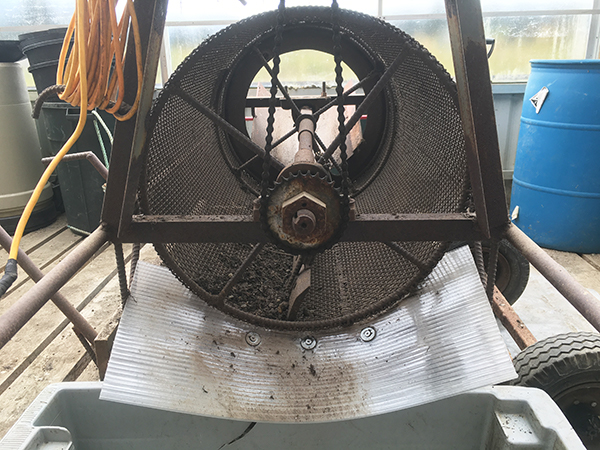
Outflow shoot that directs oversized debris into a collection bin.
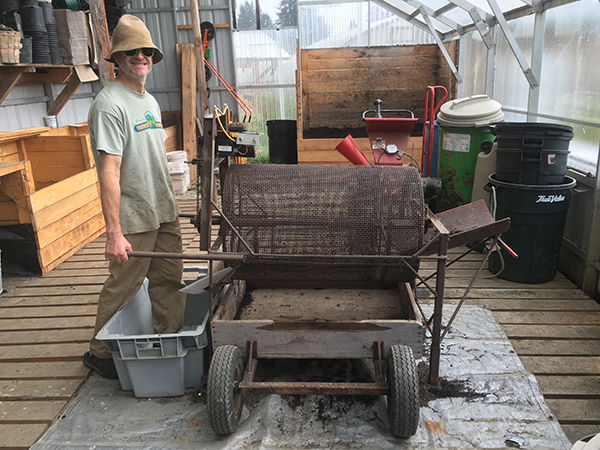
One of the things they do with the sifted compost is to cover direct-seeded beds in their field. Southeast Alaska is a challenging growing climate. Usually, the soil in the field is too wet for using a push seeder to open a furrow and then cover the seeds. So, instead they use the seeder just to drop the seeds directly on the surface of their beds and then they cover the seeds with sifted compost using the spreader. To speed up this process and get an even layer of compost, they designed a spreader that is similar to a peat moss spreader, but unlike a peat moss spreader it rides above the bed supported by two large wheels that roll on the pathways.
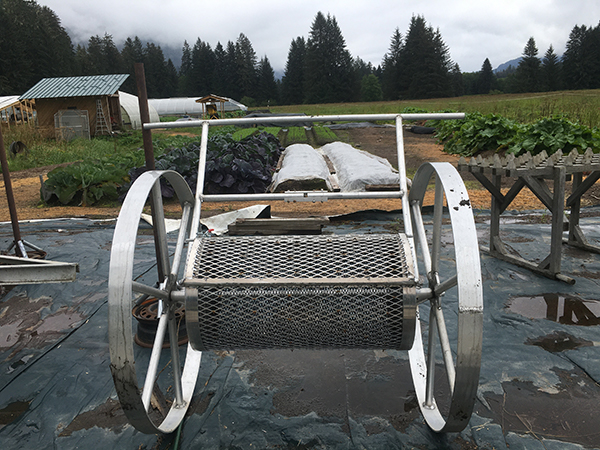
Aluminum compost spreader.
For the spreader, Bo worked with a fabricator friend who primarily works in aluminum to get it built. Aluminum is lightweight and corrosion resistant which is a nice benefit for a tool that is being pulled around and that lives in a wet climate. The drum on the spreader is made from expanded aluminum mesh, which is larger than what the farm ultimately thought they needed. Yet, it allowed them to line the drum with finer mesh, potentially adjusting the flow rate by using different sized mesh liners. In its current set up, they load the barrel with about 2 cubic feet of sifted compost and then roll out and back twice on a 30-foot-long bed to put down about ¼ inch of compost. The barrel of the spreader distributes the compost evenly across the full width of a 30-inch bed.
Bo’s notes on the devil being the in details also made me think of my conversation with Marja, who is ultimately the one on the farm who spends more time using the tools. Not only is it important to design the tools well, but it’s also important to develop good systems for using the tools efficiently, and she has obviously done that.
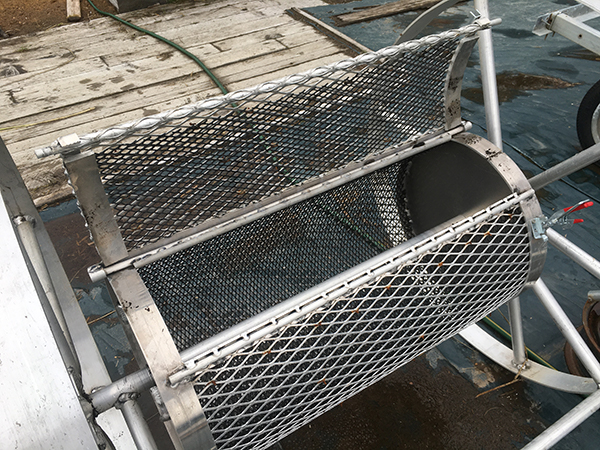
One example is that when using the spreader, it’s helpful to know how much compost will be needed to cover the bed before filling it so that the spreader is emptied in the course of making passes over the bed and that there’s none left in the spreader at the end of the bed. Removing excess is difficult and the spreader can’t really be turned off when it’s being rolled around the farm from place to place, so it’s important that it’s empty.
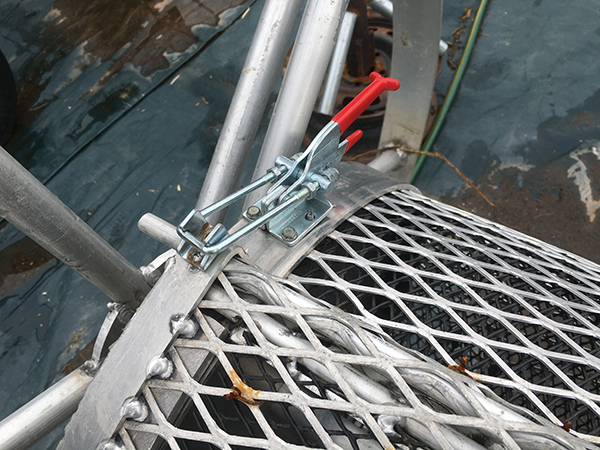
Lock for the door so it stays shut while spreading compost.
Please keep the great tool ideas coming by tagging your photos with the #toolsforgrowingformarket hashtag on Facebook and Instagram. You might get lucky and get picked to be featured here. Even if you’re not, think of all the other farmers who will get to see your favorite tools. Also, go search the hashtag, there are far more great tools there than space in this column.
Josh Volk farms in Portland, Oregon, and does consulting and education under the name Slow Hand Farm. He is the author of the book Compact Farms: 15 Proven Plans for Market Farms on 5 Acres or Less, available from Growing for Market. He can be found at SlowHandFarm.com.

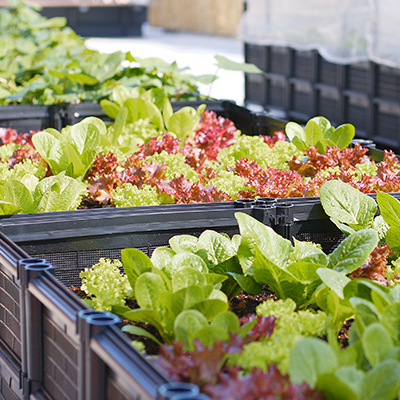

.png)

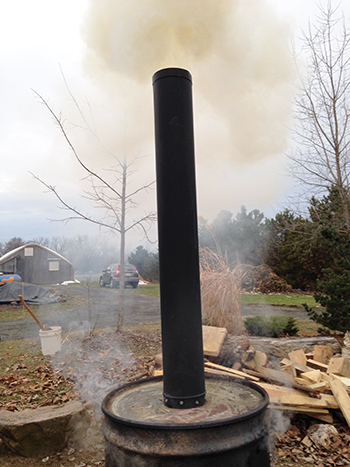 The impacts of climate chaos on Astarte Farm have forced us to look for solutions that provide increased long-term resilience in our soil systems, and biochar has shown good promise in moving us toward that goal. Biochar is a paradoxical substance. It is both an ancient agricultural practice developed thousands of years ago in the Amazonian Basin, and at the same time a relatively new approach to enhancing and stabilizing soil fertility.
The impacts of climate chaos on Astarte Farm have forced us to look for solutions that provide increased long-term resilience in our soil systems, and biochar has shown good promise in moving us toward that goal. Biochar is a paradoxical substance. It is both an ancient agricultural practice developed thousands of years ago in the Amazonian Basin, and at the same time a relatively new approach to enhancing and stabilizing soil fertility.
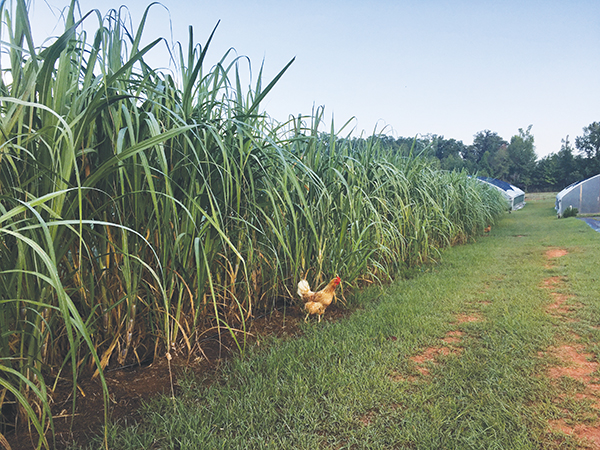 Julia Asherman appeared on my radar screen a number of years ago because she was a regular presence at the Southern Sustainable Agriculture Working Group conferences where I’ve spoken many times. Colleagues pointed her out to me as a person to watch because she was tough and smart and she was going to make something of herself as a farmer. We became conference buddies. So, when I had the good fortune to get invited to speak at the Georgia Organics Conference in Athens this winter, I knew right away I wanted to take that opportunity to visit Julia at her place, Rag & Frass Farm in Jeffersonville, Georgia.
Julia Asherman appeared on my radar screen a number of years ago because she was a regular presence at the Southern Sustainable Agriculture Working Group conferences where I’ve spoken many times. Colleagues pointed her out to me as a person to watch because she was tough and smart and she was going to make something of herself as a farmer. We became conference buddies. So, when I had the good fortune to get invited to speak at the Georgia Organics Conference in Athens this winter, I knew right away I wanted to take that opportunity to visit Julia at her place, Rag & Frass Farm in Jeffersonville, Georgia.
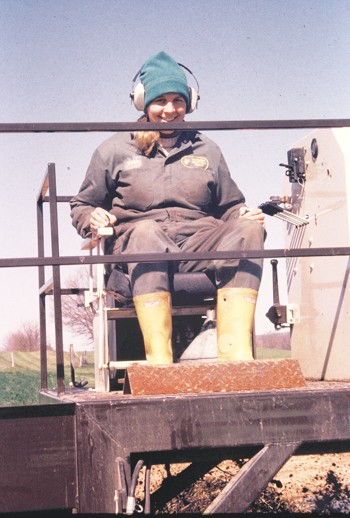 Farmer to Farmer Profile
Farmer to Farmer Profile
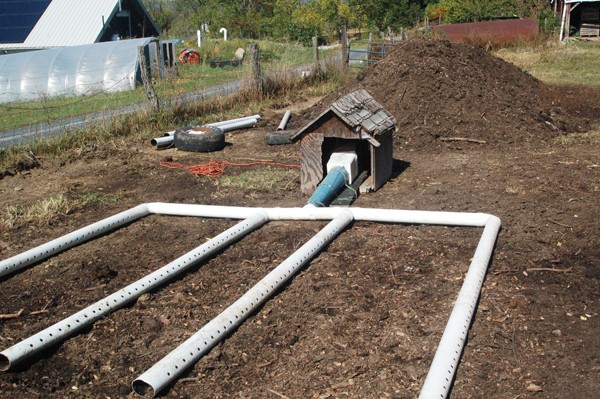 We at Four Winds Farm in Gardiner, New York have developed a no-till approach to farming that uses a lot of compost – 40 yards per acre. When we first developed our model 20 years ago, our market garden was small, only 1.5 acres, and we got our compost from an off-farm source. As we expanded, it made sense that we figure out a way of making our own compost.
We at Four Winds Farm in Gardiner, New York have developed a no-till approach to farming that uses a lot of compost – 40 yards per acre. When we first developed our model 20 years ago, our market garden was small, only 1.5 acres, and we got our compost from an off-farm source. As we expanded, it made sense that we figure out a way of making our own compost. 